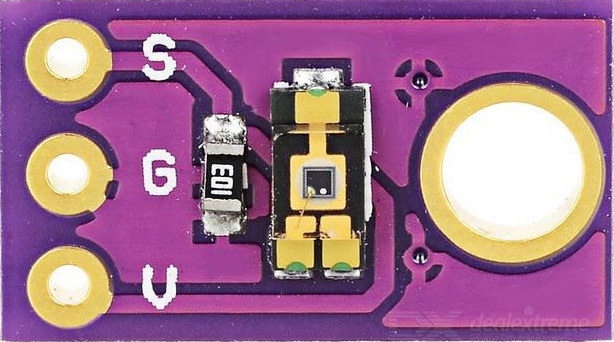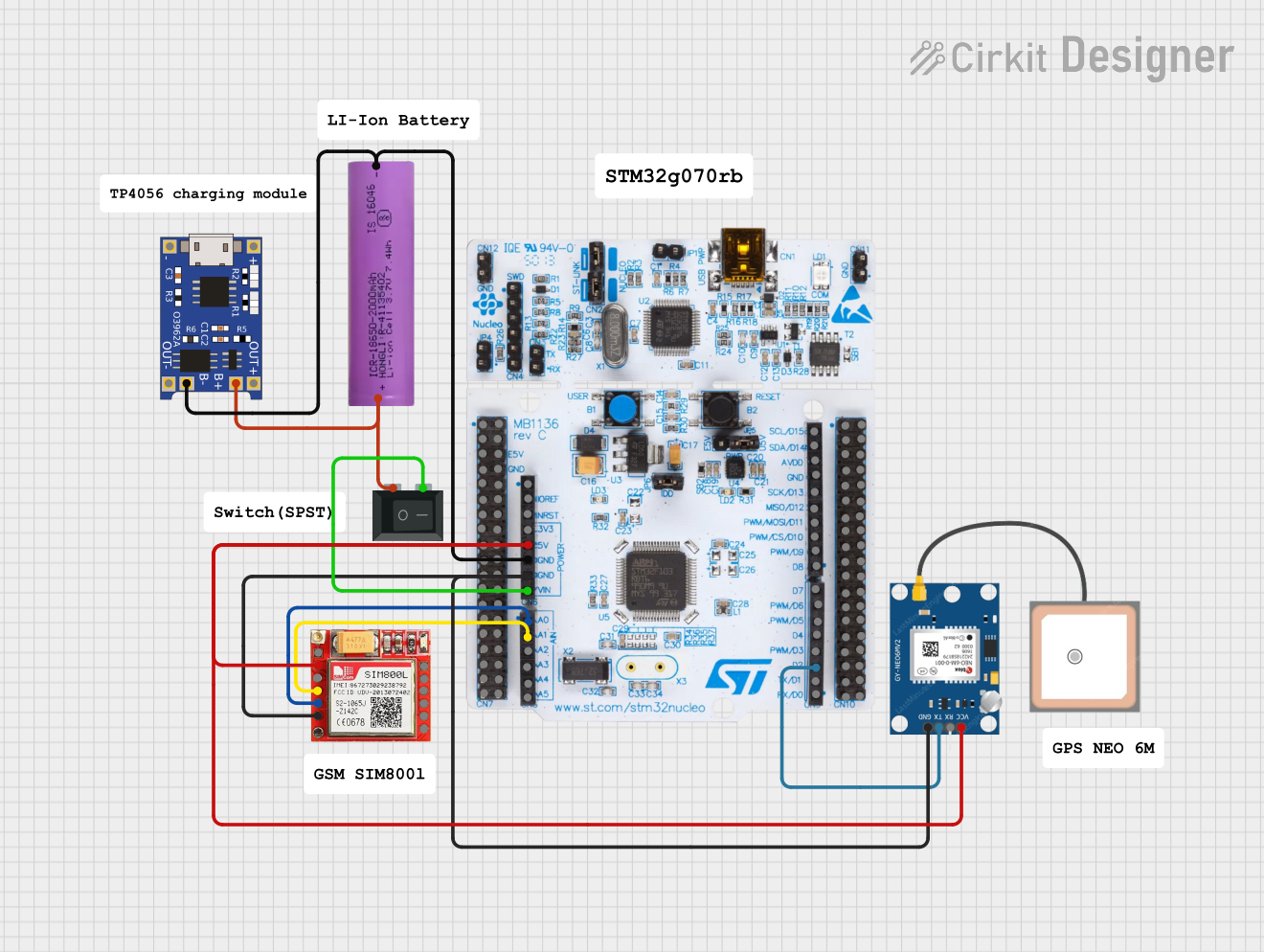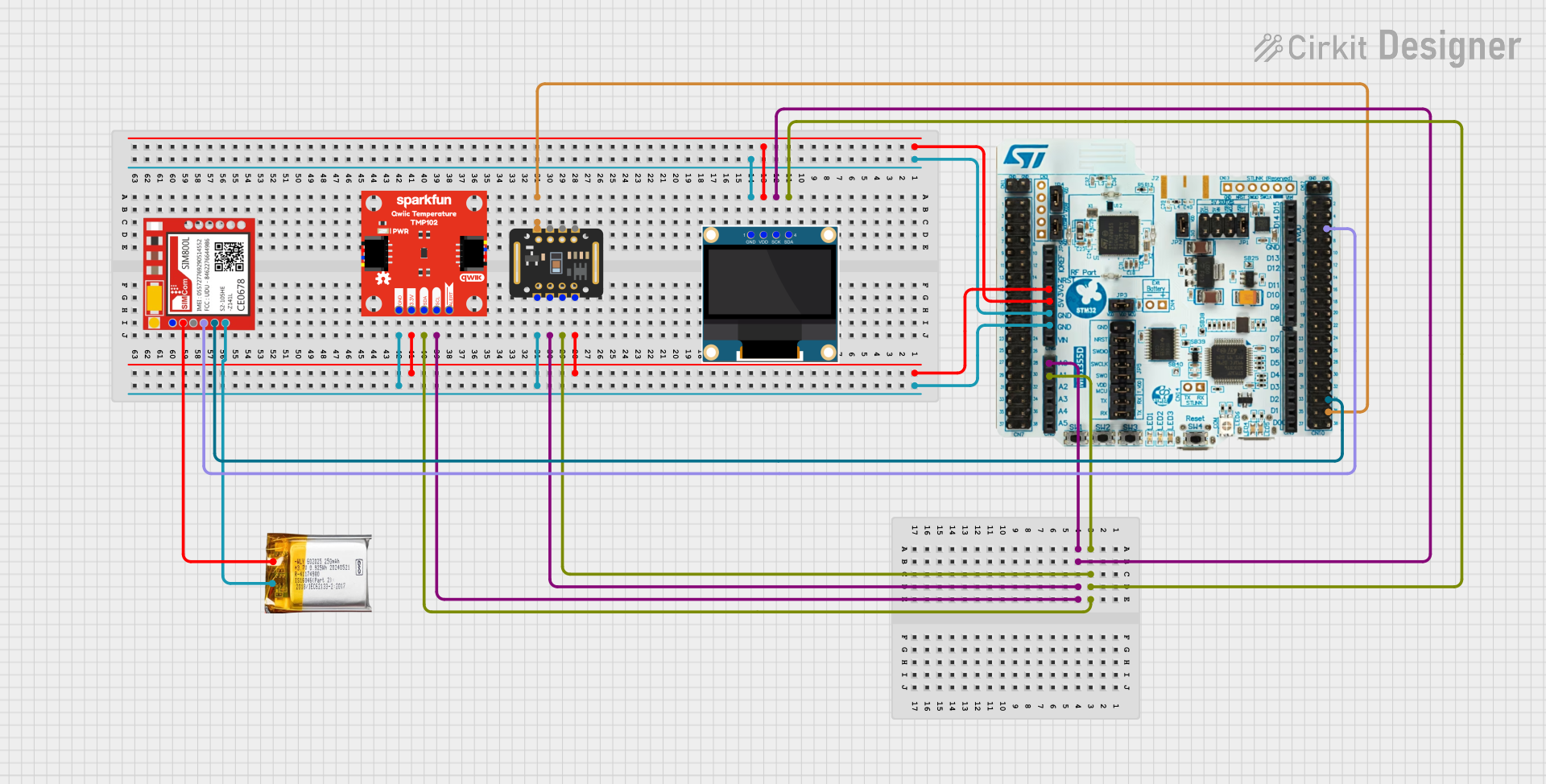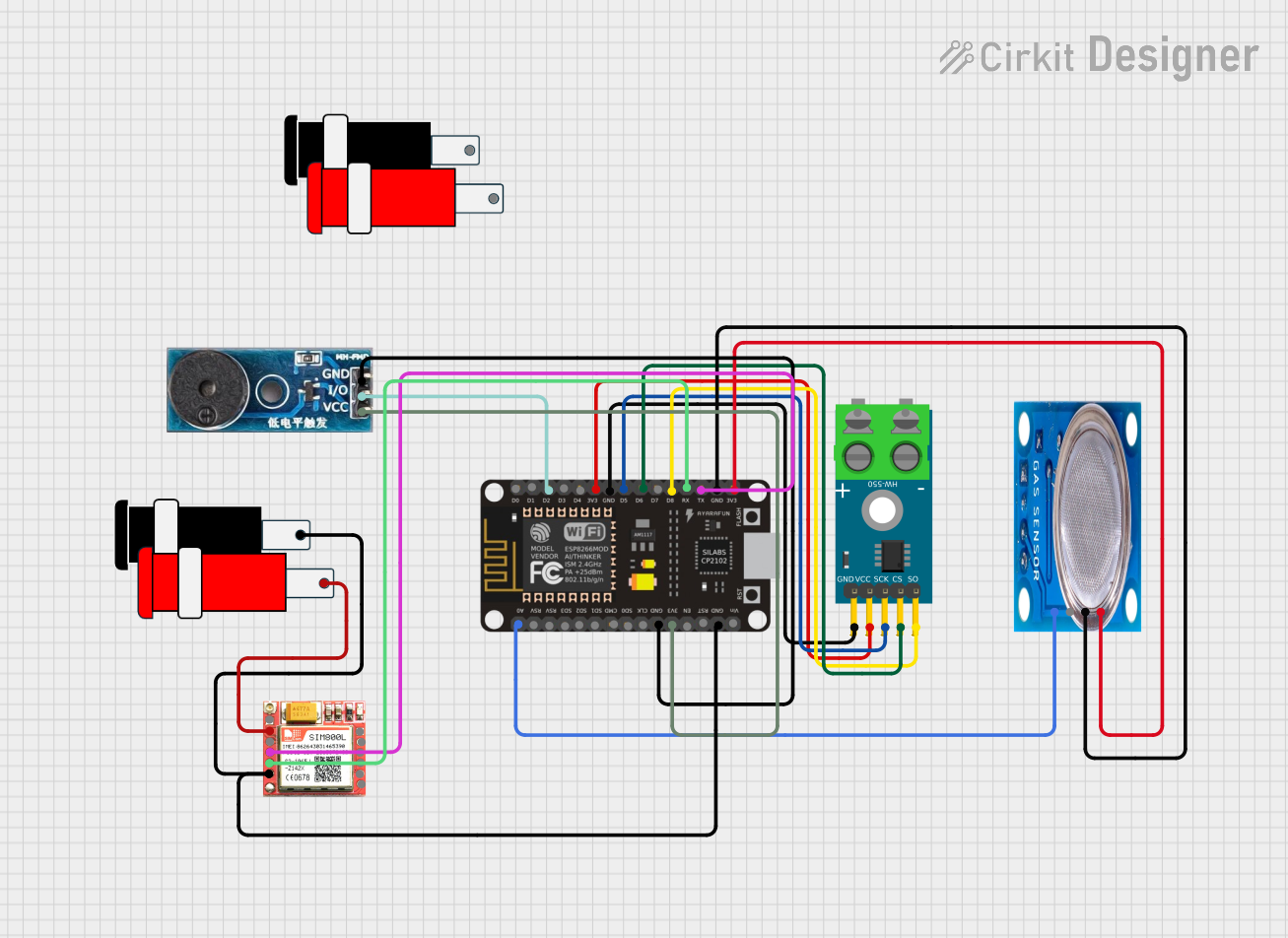
How to Use TEMT6000 module: Examples, Pinouts, and Specs

 Design with TEMT6000 module in Cirkit Designer
Design with TEMT6000 module in Cirkit DesignerIntroduction
The TEMT6000 module, manufactured by Vishay, is a high-sensitivity ambient light sensor designed to detect and measure ambient light levels. It outputs an analog voltage proportional to the intensity of the light, making it an ideal choice for applications requiring precise light measurement. The module is compact, easy to use, and integrates seamlessly into various electronic projects.
Explore Projects Built with TEMT6000 module

 Open Project in Cirkit Designer
Open Project in Cirkit Designer
 Open Project in Cirkit Designer
Open Project in Cirkit Designer
 Open Project in Cirkit Designer
Open Project in Cirkit Designer
 Open Project in Cirkit Designer
Open Project in Cirkit DesignerExplore Projects Built with TEMT6000 module

 Open Project in Cirkit Designer
Open Project in Cirkit Designer
 Open Project in Cirkit Designer
Open Project in Cirkit Designer
 Open Project in Cirkit Designer
Open Project in Cirkit Designer
 Open Project in Cirkit Designer
Open Project in Cirkit DesignerCommon Applications and Use Cases
- Automatic brightness adjustment in displays
- Smart lighting systems
- Environmental light monitoring
- Robotics and automation
- Energy-saving systems
Technical Specifications
The TEMT6000 module is based on the TEMT6000 phototransistor, which is optimized for visible light detection. Below are the key technical details:
| Parameter | Value |
|---|---|
| Operating Voltage | 3.3V to 5V |
| Output Type | Analog voltage |
| Spectral Sensitivity Range | 360 nm to 970 nm |
| Peak Sensitivity Wavelength | 570 nm |
| Maximum Output Voltage | ~Vcc (dependent on light intensity) |
| Operating Temperature Range | -40°C to +85°C |
| Dimensions | ~10 mm x 10 mm x 5 mm |
Pin Configuration and Descriptions
The TEMT6000 module typically has three pins for easy integration into circuits. The pinout is as follows:
| Pin | Name | Description |
|---|---|---|
| 1 | VCC | Power supply input (3.3V to 5V) |
| 2 | GND | Ground connection |
| 3 | OUT | Analog output voltage proportional to light intensity |
Usage Instructions
The TEMT6000 module is straightforward to use in a circuit. Follow the steps below to integrate it into your project:
- Power the Module: Connect the
VCCpin to a 3.3V or 5V power source and theGNDpin to the ground of your circuit. - Read the Output: Connect the
OUTpin to an analog input pin of your microcontroller or ADC (Analog-to-Digital Converter). The output voltage will vary with the ambient light intensity. - Calibrate for Your Application: Depending on your application, you may need to map the analog output to a specific range or scale.
Important Considerations and Best Practices
- Avoid Direct Sunlight: While the TEMT6000 is designed for ambient light detection, direct exposure to intense light sources (e.g., sunlight) may saturate the sensor and affect accuracy.
- Use a Stable Power Supply: Ensure the power supply is stable to avoid noise in the analog output.
- Filter Noise: If the output signal is noisy, consider adding a capacitor (e.g., 0.1 µF) between the
OUTpin andGNDto filter high-frequency noise. - Mounting: Place the module in a location where it can accurately measure ambient light without obstructions.
Example: Using the TEMT6000 with Arduino UNO
Below is an example of how to connect and read data from the TEMT6000 module using an Arduino UNO:
Circuit Diagram
- Connect
VCCto the 5V pin on the Arduino. - Connect
GNDto the GND pin on the Arduino. - Connect
OUTto the A0 analog input pin on the Arduino.
Arduino Code
// TEMT6000 Light Sensor Example with Arduino UNO
// Reads the analog output from the TEMT6000 module and prints the value to the Serial Monitor.
const int sensorPin = A0; // Define the analog pin connected to the TEMT6000 OUT pin
void setup() {
Serial.begin(9600); // Initialize serial communication at 9600 baud
pinMode(sensorPin, INPUT); // Set the sensor pin as an input
}
void loop() {
int sensorValue = analogRead(sensorPin); // Read the analog value from the sensor
float voltage = sensorValue * (5.0 / 1023.0); // Convert the value to voltage
// Print the raw value and voltage to the Serial Monitor
Serial.print("Raw Value: ");
Serial.print(sensorValue);
Serial.print(" | Voltage: ");
Serial.print(voltage);
Serial.println(" V");
delay(500); // Wait for 500 milliseconds before the next reading
}
Troubleshooting and FAQs
Common Issues and Solutions
No Output or Incorrect Readings
- Cause: Incorrect wiring or loose connections.
- Solution: Double-check the wiring and ensure all connections are secure.
Output Voltage Stuck at Maximum
- Cause: Sensor exposed to very bright light or direct sunlight.
- Solution: Move the sensor to a location with ambient light or reduce the light intensity.
Fluctuating Output
- Cause: Electrical noise or unstable power supply.
- Solution: Add a decoupling capacitor (e.g., 0.1 µF) between
OUTandGNDto filter noise.
Low Sensitivity
- Cause: Obstructions or incorrect placement of the sensor.
- Solution: Ensure the sensor has a clear line of sight to the light source.
FAQs
Q: Can the TEMT6000 module detect infrared light?
A: The TEMT6000 is optimized for visible light detection, with peak sensitivity at 570 nm. While it can detect some infrared light, its response is significantly lower in the infrared spectrum.
Q: Can I use the TEMT6000 module with a 3.3V microcontroller?
A: Yes, the module operates within a voltage range of 3.3V to 5V, making it compatible with 3.3V systems.
Q: How do I map the sensor output to lux (light intensity)?
A: The TEMT6000 output is proportional to light intensity, but converting it to lux requires calibration with a known light source and reference lux meter.
Q: Is the TEMT6000 module waterproof?
A: No, the module is not waterproof. If used outdoors, ensure it is protected from moisture and water exposure.
By following this documentation, you can effectively integrate the TEMT6000 module into your projects and achieve accurate ambient light measurements.